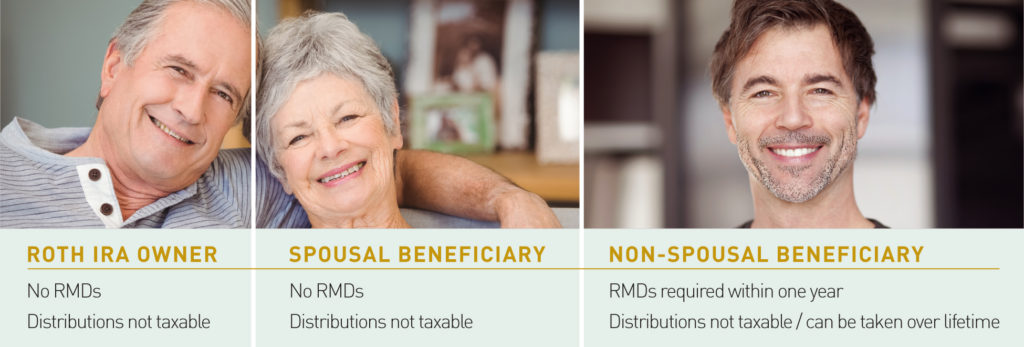Roth IRA conversions offer investors three main benefits: tax diversification, no required minimum distributions, and more flexible liquidity. But before we get into specifics, let’s first review the basics of traditional vs Roth IRAs.

Tax Diversification
Converting to a Roth IRA is largely a tax transfer or tax diversification issue for most investors. For example, if you expect your marginal tax rate to be higher at retirement, a Roth IRA allows you to maximize a lower marginal tax rate during accumulation, and gives the flexibility of pulling from various accounts during retirement.
The income taxes that must be paid upon conversion can be paid out of the fund, which reduces the value of the Roth IRA, or paid from non-retirement assets, which is ideal since it allows the full pre-tax value of the IRA to be converted to the Roth.
If your marginal tax rate is expected to increase, time is of the essence to complete the conversion in order to minimize the taxable amount. In some cases, it may be ideal to do partial conversions, which can be done on an annual basis based on a defined tax strategy.

For example, if Mark invested $10,000 annually between ages 35 and 65, and expected his marginal tax rate to increase upon retirement, a Roth IRA would be worth $64,000 more after tax. If his tax rate decreased, it is the traditional Roth that would have a greater after tax value. Remaining in a consistent tax bracket would have no effect on the after tax value of the account.
Required Minimum Distributions
Another key benefit of a Roth IRA conversion is the lack of required minimum distributions (RMDs), as are mandatory with traditional IRAs at age 70 ½. For investors who are well positioned in retirement from other sources, such as Social Security or pensions, the extra distribution may be unnecessary or even detrimental to your tax position. The lack of RMDs also makes Roth IRAs a valuable wealth transfer tool. Beneficiaries of Roth IRAs are subject to RMDs, but the distributions are still not taxed. Additionally, beneficiaries can control the amount of distributions, which can give the funds decades of tax-free growth.
 Liquidity
Liquidity
After the first five years of completing your conversion, a Roth IRA offers a high level of flexible liquidity with the ability to withdraw contributions tax- and penalty-free at any time. Withdrawing earnings will generally incur both income taxes and a 10% penalty tax, with a few exceptions:
- Death or disability of the account holder
- Up to $10,000 to purchase a first home for yourself or certain family members
- Higher-education costs for yourself or a family member (no penalty, but will incur income tax)
To gain the greatest benefit, the timing of a Roth IRA conversion should be carefully planned. Make sure the discussion is part of your annual review with your advisor to learn how you can benefit most.